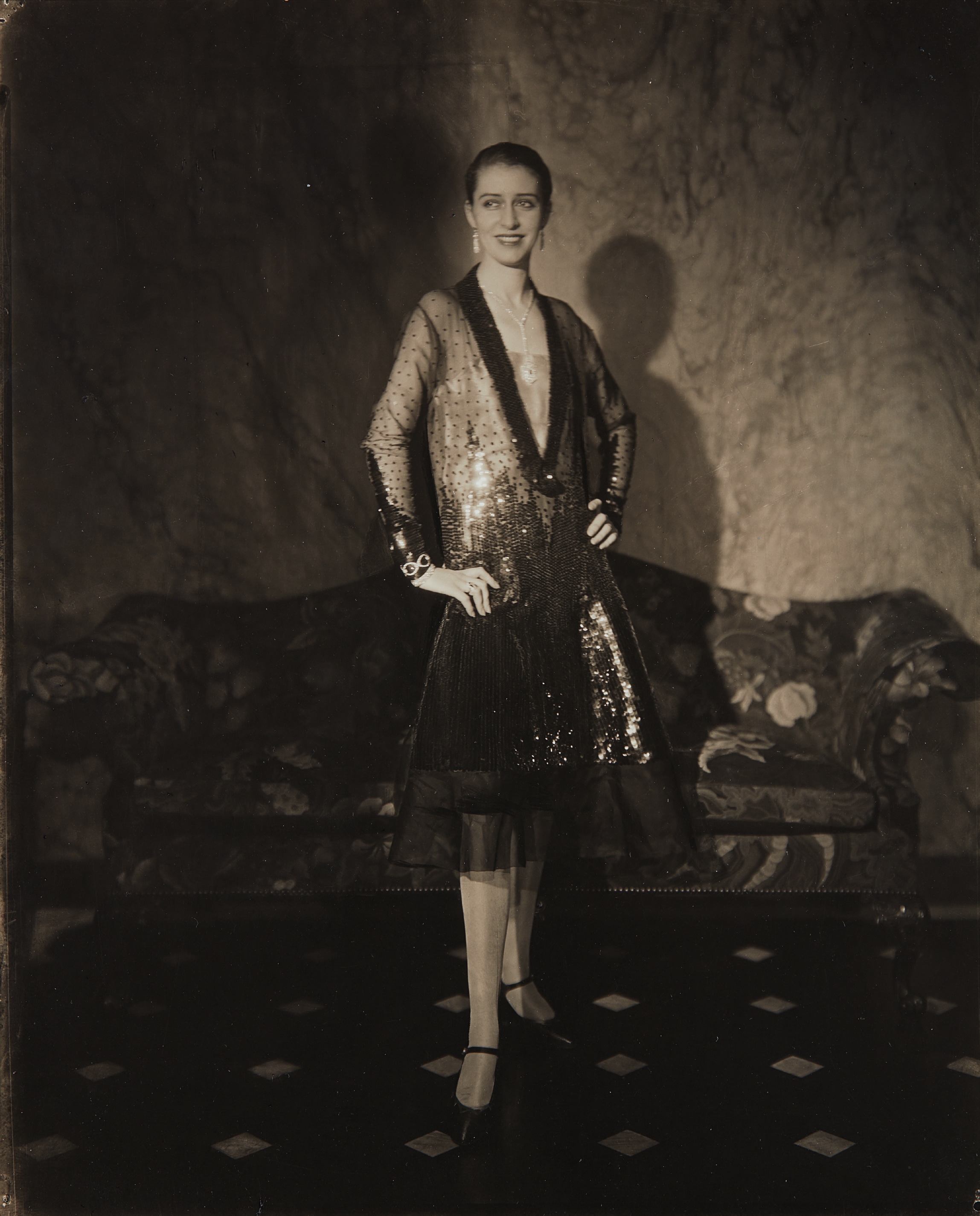

40
Edward Steichen
Chéruit Gown (Marion Morehouse) (Mrs. E.E. Cummings)
1927
Gelatin silver print.
9 1/2 x 7 3/4 in. (24.1 x 19.7 cm)
Annotated 'Vogue fashion', dated and numbered '25' in the negative in the margin; credit stamp on the reverse of the flush-mount.
Full-Cataloguing
An additional print of this image is in the collection of the Victoria and Albert Museum, London.
Edward Steichen revolutionized fashion photography in 1923, when Condé Nast and Frank Crowninshield hired him as chief photographer for Vogue and Vanity Fair. By then, in his own work, he had already moved beyond the Pictorial style of his predecessor, Baron Adolph de Meyer, and he quickly ushered in a new look on the pages of both magazines. Taken for Vogue just fve years into his tenure, this photograph of a Cheruit gown modeled by Marion Morehouse exemplifes the modern era.
Just as designers were abandoning the corset in favor of the fapper aesthetic of the roaring 1920s, so too did Steichen abandon the elaborate props, staging, and backdrops of earlier fashion photography, choosing instead a more natural, informal style. In the image ofered here, Morehouse poses not in the studio, but in Condé Nast’s apartment—she seems to have been caught in an almost candid moment. Regarding Morehouse, one of his favorites, Steichen wrote, “The greatest fashion model I ever photographed was Marion Morehouse. . . When she put on the clothes that were to be photographed, she transformed herself into a woman who really would wear that gown. . .” (A Life in Photography, n.p.).
With her beautiful smile and breezy self-confidence, Morehouse herself was a significant departure from the typical mannequins of the day. She was discovered in an “open call” for models in 1924 and rose to celebrity status in her own right. Appearing again and again on the pages of Vogue and other magazines, she came to symbolize the new American woman. She met the poet e. e. cummings in the early 1930s and lived with him until his death in 1962. When her modeling career came to a close, she turned to photography. A volume of her photographs, Adventures in Value: Fifty Photographs, with an introduction by cummings, was published in the 1960s.
Edward Steichen revolutionized fashion photography in 1923, when Condé Nast and Frank Crowninshield hired him as chief photographer for Vogue and Vanity Fair. By then, in his own work, he had already moved beyond the Pictorial style of his predecessor, Baron Adolph de Meyer, and he quickly ushered in a new look on the pages of both magazines. Taken for Vogue just fve years into his tenure, this photograph of a Cheruit gown modeled by Marion Morehouse exemplifes the modern era.
Just as designers were abandoning the corset in favor of the fapper aesthetic of the roaring 1920s, so too did Steichen abandon the elaborate props, staging, and backdrops of earlier fashion photography, choosing instead a more natural, informal style. In the image ofered here, Morehouse poses not in the studio, but in Condé Nast’s apartment—she seems to have been caught in an almost candid moment. Regarding Morehouse, one of his favorites, Steichen wrote, “The greatest fashion model I ever photographed was Marion Morehouse. . . When she put on the clothes that were to be photographed, she transformed herself into a woman who really would wear that gown. . .” (A Life in Photography, n.p.).
With her beautiful smile and breezy self-confidence, Morehouse herself was a significant departure from the typical mannequins of the day. She was discovered in an “open call” for models in 1924 and rose to celebrity status in her own right. Appearing again and again on the pages of Vogue and other magazines, she came to symbolize the new American woman. She met the poet e. e. cummings in the early 1930s and lived with him until his death in 1962. When her modeling career came to a close, she turned to photography. A volume of her photographs, Adventures in Value: Fifty Photographs, with an introduction by cummings, was published in the 1960s.